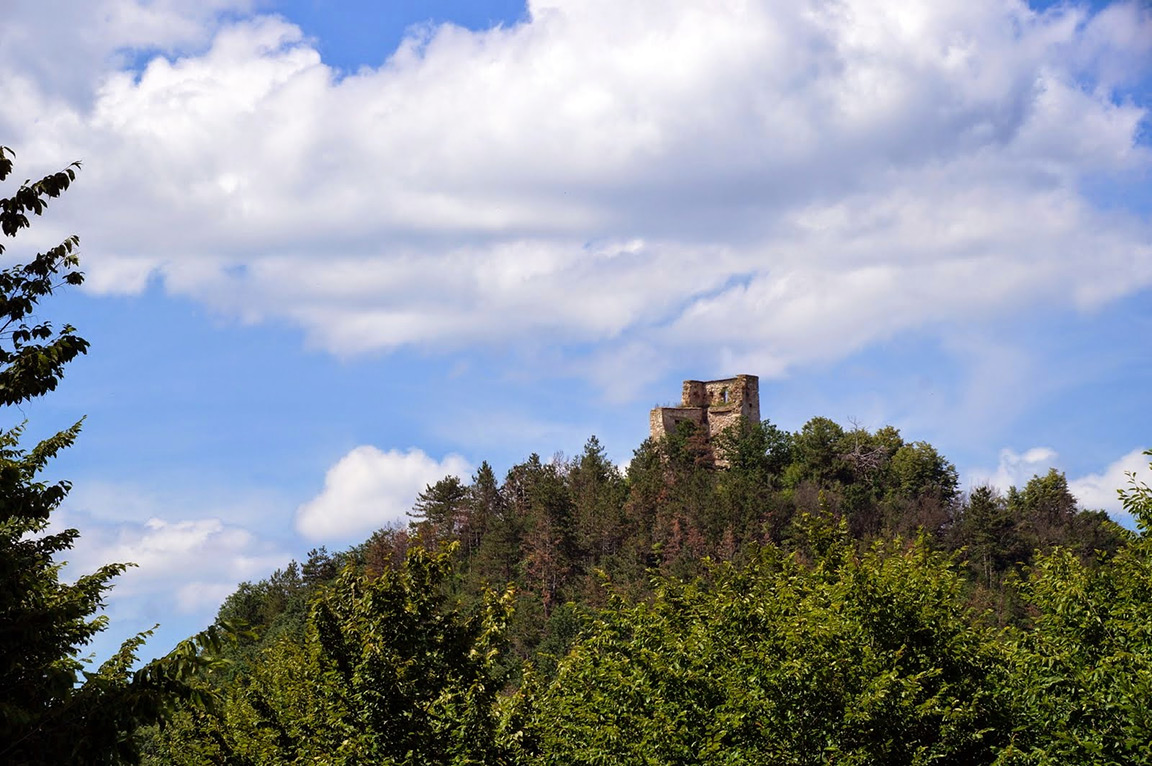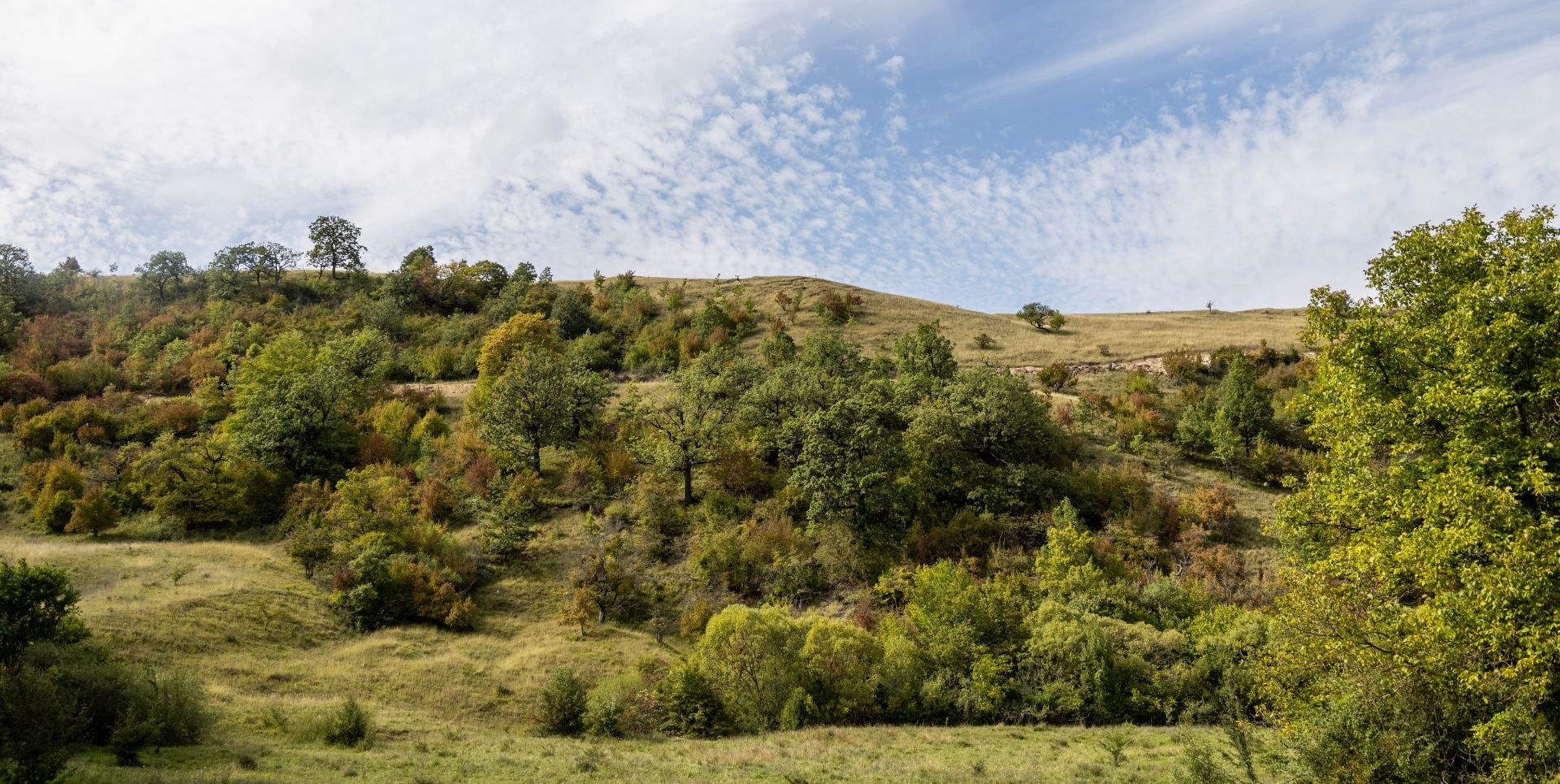Almás (Almaş) Fortress
The ruins that dominate a hilltop in the range overlooking the Almás Creek valley are visible from a distance.
An old manuscript attests that the fortress existed as early as 1370. A charter dated in this year is the earliest reference to the stronghold, which was once known as Dezső Fortress, suggesting that it might have been built by Györk’s son Dezső. He consequently lost ownership after supporting the rebellion of palatine Borsa the Bald (1317) against King Charles Robert, king of Hungary. Almás then became a royal fortress until King Louis the Great of Hungary awarded the estate to royal treasurer György Bebek of Pelsőc (1370), whose family owned it for a century. Transylvanian voivode Imre Bebek’s son Pál, accused of disloyalty to the king, lost the estate around 1469. In 1470 King Matthias awarded the fortress and estate to his cousin, voivode of Transylvania János Pongrác Dengelegi. Between 1501 and 1504 the owner was János Corvin, and, after his death, his widow Erzsébet Frangepán. Multiple estate swaps and dowry exchanges later, the fortress came under the ownership of Transylvanian voivode Imre Balassa.
During the power struggles following the battle of Mohács, Almás proved to be of strategic importance. In the power struggles between Transylvanian voivode John Szapolyai and the Emperor Ferdinand I, Transylvanian voivodes István Majlád and Imre Balassa—the fortress’s owner at the time—sided with Ferdinand. Szapolyai’s troops led by Bálint Török besieged and occupied Almás in April 1540.
Later, in 1551, the fortress was unsuccessfully besieged by Habsburg forces under general Castaldo.
The succession of sieges completely destroyed the structure. In 1593, it is referred to as a devastated stronghold. In 1594 Transylvanian prince Zsigmond Báthory awarded the Almás estate to head captain of Transylvanian troops István Csáky, who rebuilt the fortress. István Csáky led Transylvanian troops against the invading Michael the Brave, voivode of Wallachia. The imperial troops rushing to Michael’s support invaded Transylvania, and in 1602, led by general Giorgio Basta, blockaded the fortress. After a brief siege, the guards surrendered. General Basta slayed the unarmed guards and had the fortress torched and destroyed.
After it was restored in 1627, Almás fortress gained military significance. Together with the stronghold in Bologa (Sebesvár), it was part of a system of fortresses on Transylvania’s western line of defense. When Transylvanian prince György Rákóczi II’s military campaign in Poland failed, in September 1658 the Turkish-Tatar troops that had been ravaging Transylvania torched Almás fortress. The devastated structure was never rebuilt again. From then on Almás ceased to be a stronghold. Its ruins have been decaying ever since.
The only remaining section is the upper core, the 15-meter-high [50-foot] tower spanning an area approximately 10 x 10 meters [30 x 30 feet]. Its northern and western walls are still standing, but, unfortunately, its other two walls have eroded into barely distinguishable mounds.
Bibliography: Dezső Malonyay: A magyar nép művészete (Hungarian Folk Art); Margit Kiss: Kispetri, református templom (Reformed Church of Kispetri); Árpád Furu: Kalotaszeg népi építészete (Folk Architecture of Kalotaszeg); Béla Kabay: Kalotaszegi műemlékek kis adattára (Small Archive of the Monuments of Kalotaszeg); Ferenc Mihály: Elpusztult templomi festett famennyezetekről (About Perished Painted Church Ceilings); Kalotaszeg antológia 1-2 (Anthology of Kalotaszeg 1-2). 1990–2008. Editor, Pál Buzás; Kalotaszegi krónikácskák (Small Chronicles of Kalotaszeg). Compiled by János Kovács Kuruc and Erzsébet Ildikó Szalai.
Photos by: Róbert Branea.





